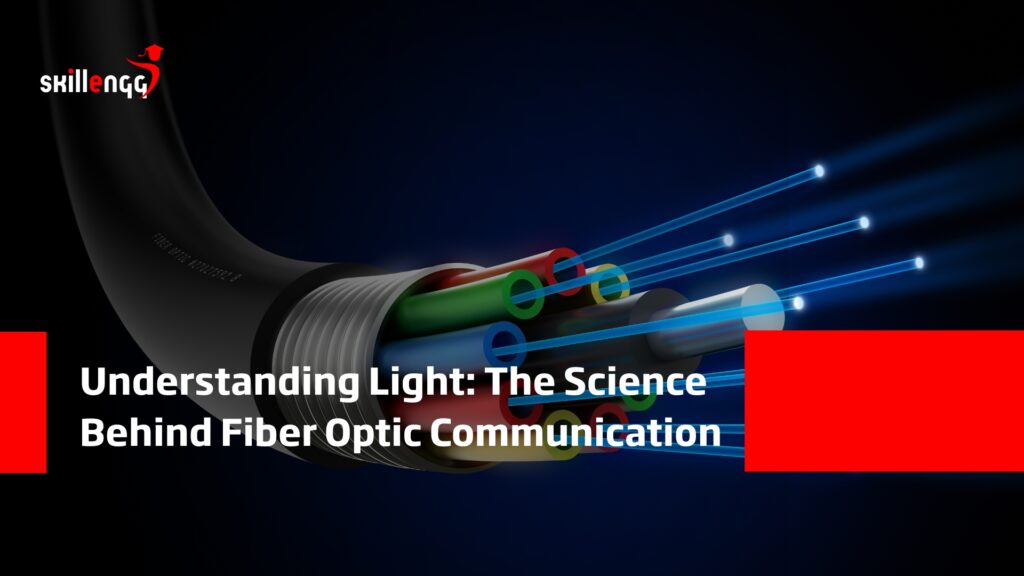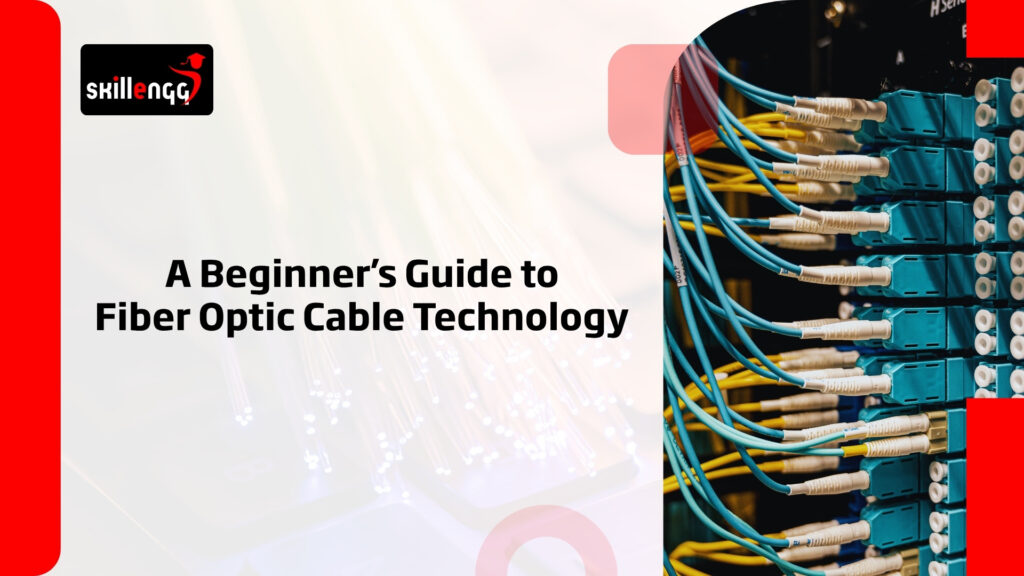In today’s fast-paced world, connectivity is no longer a luxury—it’s a necessity. From working remotely to streaming in 4K, the speed and reliability of data transfer directly affect how we live, work, and communicate. At the heart of this revolution lies fiber optic communication systems, which use light to carry information faster, safer, and farther than traditional copper cables. The companies building these systems and offering fiber optic services are reshaping industries and transforming our daily experiences.
This blog unpacks the science of light in optical communication, explains how it works, and highlights why choosing a fiber optics course could be the career break you’ve been waiting for.
Fiber Optic Training: The Science of Light
Fiber optic technology has become the backbone of modern communication, carrying information at the speed of light across the globe. To keep up with this demand, professionals need the right skills and knowledge to work with this advanced system. Fiber optic training provides a strong foundation in the principles of light transmission, cable installation, splicing, and maintenance. It bridges theory with hands-on practice, preparing learners for careers in telecom, IT, and networking. By understanding how light powers communication, trainees gain valuable expertise that opens doors to high-demand jobs and long-term career growth in a fast-evolving industry.
What is Fiber Optics?
Fiber optics is a technology that uses thin strands of glass or plastic—known as optical fibers—to transmit information as pulses of light. Instead of electrical signals, which are prone to interference and speed limitations, fiber carries data through light beams.
Because light travels at such incredible speeds, fiber optic communication systems allow vast amounts of information to move across the globe almost instantaneously. Today, leading fiber optic communication companies provide the backbone for the internet, global business networks, and cloud services. Their investments in fiber optic services ensure that people can work, learn, and connect seamlessly, regardless of location.
In short, fiber optics is the invisible infrastructure that powers modern life.
How Does It Work?
The magic of fiber optics lies in its ability to trap light within its core using a principle called total internal reflection. Each fiber has a core surrounded by cladding with a lower refractive index. When light enters the core at a specific angle, it bounces along the fiber without escaping, traveling for kilometers with minimal signal loss.
Lasers or LEDs generate light pulses, which represent digital information. At the receiving end, detectors convert the light back into data. This process makes optical communication not only fast but also highly secure and efficient.
Compared to copper wires, fiber offers unmatched benefits:
- Speed and Bandwidth: Fiber transmits enormous data loads at the speed of light.
- Distance: Signals can travel long distances without weakening.
- Durability: Fiber resists electromagnetic interference, ensuring consistent service.
- Security: Fiber is harder to tap, making communication more secure.
These advantages are why fiber optic communication companies are rapidly expanding their networks and why governments are investing in fiber optic services as a foundation for digital economies.
Why Choose a Fiber Optics Course?
As demand for faster, more reliable internet grows, so does the need for skilled professionals to install and maintain fiber optic communication systems. From building city-wide internet grids to laying undersea cables, technicians and engineers are essential to this industry’s growth.
Enrolling in a fiber optics course offers more than technical know-how. It provides:
- Hands-On Learning – Gain practical skills like splicing, terminating, and testing fibers.
- Industry Relevance – Learn the standards and protocols used by leading fiber optic communication companies.
- Future-Ready Training – Prepare for careers in telecom, IT, healthcare, and more.
- Job Security – With fiber optic services expanding globally, skilled technicians are in high demand.
Whether you’re a fresh graduate, a working professional seeking to upskill, or someone looking for a career change, a fiber optics course can set you apart.
Career Benefits of Fiber Optics Education
The career benefits of studying fiber optics are immense. Here are a few ways this education can pay off:
- High Demand Careers: With the rise of smart cities, 5G, and cloud computing, fiber optic communication companies need certified technicians to keep networks running.
- Competitive Salaries: Professionals trained in optical communication often earn higher wages because their skills are highly specialized.
- Global Opportunities: Since fiber optic services are used worldwide, technicians can find work across industries and countries.
- Career Growth: With experience, you can move into supervisory, engineering, or project management roles in fiber optic communication systems.
Moreover, enrolling in fiber optic training followed by fiber optic certification shows employers you meet international standards. Programs like fiber optic certification training and fiber optic technician certification validate both your theoretical knowledge and practical expertise, boosting your employability.
Benefits of Learning a Fiber Optics Course
Studying fiber optics is not just about securing a job; it’s about being part of a technology that shapes the future. Some key benefits include:
- Future-Proof Skills – As industries embrace digital transformation, fiber optics is only growing in relevance.
- Cross-Industry Demand – From telecom to healthcare, industries rely on optical communication for daily operations.
- Practical Application – Unlike purely academic fields, fiber optics offers immediate, real-world application of your learning.
- Entrepreneurial Opportunities – Beyond employment, you can start your own service company, offering fiber optic services to local businesses or communities.
Education programs that combine fiber optic training with recognized fiber optic certification ensure learners gain both knowledge and credibility. Completing fiber optic certification training equips you with industry-recognized skills, while earning a fiber optic technician certification demonstrates that you’re job-ready.
Conclusion
Light has always been a symbol of progress, and in the case of fiber optic communication systems, it literally drives progress by transmitting data at lightning speeds. From powering the global internet to enabling life-saving surgeries, optical communication is at the core of modern society.
For individuals, the growth of fiber optic services means opportunity. By choosing a fiber optics course, you not only gain knowledge but also unlock a rewarding career path with global demand. With the right fiber optic training and fiber optic certification, including programs like fiber optic certification training and fiber optic technician certification, you position yourself as an expert in a field shaping the future of connectivity.
So, if you’ve ever wondered how information travels at the speed of light and how you can be part of that journey, the answer is clear: invest in fiber optics education today.




